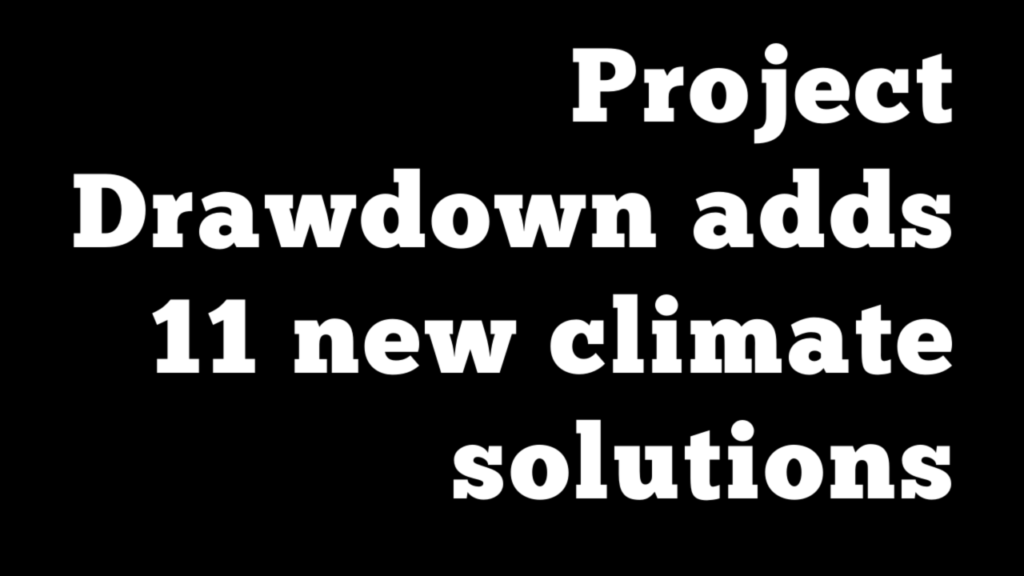Project Drawdown adds 11 new climate solutions

Here’s the intro from this Project Drawdown announcement:
Five years ago Project Drawdown published a collection of “drawdown solutions,” technologies and practices that, if ambitiously implemented together, can achieve drawdown—the point in the future when levels of greenhouse gases in the atmosphere stop climbing and start to steadily decline, thereby stopping catastrophic climate change. A newly released update of this landmark analysis adds 11 new solutions and confirms with even more clarity and conviction that humanity has the solutions needed to reach drawdown quickly, safely, efficiently, and equitably.
The 11 new solutions include:
Seaweed Farming – Seaweed farming is one of the most sustainable types of aquaculture. Expanding seaweed farming enhances carbon sequestration and boosts production of biomass that can be used for biofuel, bioplastic, livestock feed, and human consumption.
Macroalgae Protection and Restoration – Macroalgae forests are among the most productive ecosystems on Earth. Protecting and restoring those habitats, enhances carbon sequestration in the deep sea.
Improved Fisheries – Improved fisheries involves reforming and improving the management of wild-capture fisheries to reduce excess effort, overcapitalization, and overfishing. This can reduce fuel usage and rebuild fish populations.
Improved Aquaculture – Aquaculture is one of the fastest-growing animal food sectors. Because some aquaculture systems are highly energy intensive, ensuring that part of the on-site energy consumption is based on renewable resources would reduce greenhouse gas emissions.
Seafloor Protection – Vast amounts of carbon stored in seafloor sediments risk release by bottom-trawling fishing. Bottom-trawling bans and establishment of Marine Protected Areas can protect this important carbon sink.
Improved Cattle Feed – Optimizing cattle feeding strategies can lower the methane emissions produced within the ruminant digestive system. Nutrient-enriched diets of high-quality forages, additives, and supplements aim to improve animal health and productivity.
Improved Manure Management – Livestock manure produces methane, a potent greenhouse gas. Advanced technologies and practices for managing manure can reduce the adverse climate impact of animal agriculture.
Methane Leak Management – Methane, a potent greenhouse gas, is emitted during the production and transport of oil and natural gas. Managing methane emissions can reduce greenhouse gases in the atmosphere.
Recycled Metals – Metals are extracted from nonrenewable ores. Recycled metals capitalize on already extracted materials—making it possible to produce goods more efficiently, reduce the need to extract new resources, and cut down on energy and water use.
Recycled Plastics – Recycling plastics requires less energy than producing new materials, saves landfill space, reduces environmental pollution, and decreases demand for fossil-fuel-based raw materials.
Reduced Plastics – Plastic production has grown tremendously over the past century, mainly for short-term use. Reducing the amount of plastic used in nondurable goods can significantly reduce both greenhouse gas emissions and plastic waste.
